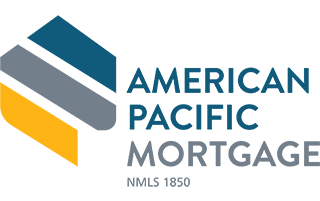Second Mortgage Vs Home Equity Loan: Which Suits You Best?
If you’re thinking about taking out a loan because you need money for whatever reason,  then you have a lot of options. If you’re a homeowner, you could use the equity that you’ve built up in your home as collateral to take out a second mortgage or a home equity line of credit (HELOC) loan. Before diving into the differences between the two, we’ll clarify for you the confusing terminology of these two types of loans.
then you have a lot of options. If you’re a homeowner, you could use the equity that you’ve built up in your home as collateral to take out a second mortgage or a home equity line of credit (HELOC) loan. Before diving into the differences between the two, we’ll clarify for you the confusing terminology of these two types of loans.
A second mortgage is also commonly referred to as a home equity loan. The term “second mortgage” is the consumer term, while the term “home equity loan” is industry terminology. A HELOC loan is a type of home equity loan, but it is also often referred to as a “home equity loan” in consumer terminology as opposed to industry’s “HELOC” loan. Essentially, they are both types of home equity loans but are both sometimes referred to only as “home equity loans”, which is where the confusion lies. Here is a more detailed explanation of how they differ from one another.
What Is A Second Mortgage?
A second mortgage is called a second mortgage because you’re taking out another loan against the equity you have in your house. This loan is provided to you in a lump sum. Remember, it does not replace your existing mortgage. It is not a refinance. It is an additional loan, but it’s referred to as a second “mortgage” because you’re putting your house up as collateral for the loan. You will be required to pay the second mortgage off on a monthly basis for a set period of time (the most common term being 15 or 30 years long). Typically, second mortgages come with a fixed interest rate.
What Is A Home Equity Loan?
A home equity line of credit, or HELOC, is also a loan taken out against the equity of your home. Instead of it being provided to you in one lump sum, it’s provided as a line of credit that you can draw from for a specific amount of time (often for five or ten-year terms). HELOC loans usually have a variable interest rate and you’ll often be given up to 20 years to repay it.
Remember There is a Difference Between a Loan and a Line of Credit
There’s a huge difference between receiving a loan as a lump sum and as a line of credit. With a lump sum (as in the case of a second mortgage), you’ll be required to begin paying it back immediately. You’ll also be paying interest on the entire sum right away. With a line of credit, you’ll only have to begin paying back what you withdraw. You’ll also only be charged interest on what you withdraw. So if you have a $10,000 line of credit, and you take out $2,000, you’ll only be making payments and paying interest on that $2,000. Any money that you pay back will simply return to your line of credit.
Both Loan Structures Involve Using the Same Property as Collateral
Both second mortgages (home equity loans) and home equity lines of credit (HELOC) share the same term (home equity loan) because you’re taking the loan out against the equity you’ve built up in your home. Your property is the collateral for the loan, and if you default on your loan, the lender can foreclose on your home. This means that there is a significant risk in taking out either loan if you can’t afford to pay them back.
The Larger Question Becomes How Do You Structure the Debt
When deciding which type of loan best suits your needs, one thing to consider is what the best way to structure your debt will be.
Fixed Payment with Predictable Repayment?
With a second mortgage, you’ll know exactly what you owe monthly and for how long you will owe it since most second mortgages have a fixed interest rate. This can make it much easier for you to budget your expenses.
Ongoing Line of Credit?
The debt of an ongoing line of credit can be easier to manage if you’re financially responsible, but there’s also more unpredictability involved. Because you only make payments and pay interest on the money you withdraw from your line of credit, your month-to-month costs will depend on the current interest rate and how much you take out.
Your payments can be a lot smaller than a second mortgage if you don’t use your entire line of credit; however, you can also end up using more money if you keep paying back what you’ve withdrawn, but continue withdrawing significant amounts of money (your line of credit replenishes when you pay back what you’ve withdrawn; you can keep using it over and over again for a set period of time).
Uses And Risks Comparing the Risks of Each Loan Type
Second mortgages and HELOC loans have some of the same risks, but because they are slightly different from one another, they have some risks that are a bit different as well that you should keep in mind.
Risks Present When Taking Out a Second Mortgage
You have to begin paying back the second mortgage and the interest you owe right away. If any financial challenges pop up in your personal life, your second mortgage can become a serious financial strain, especially considering that you’re paying it on top of your initial mortgage. If you can’t make payments, you risk losing your house.
Risks Present When Taking on a Home Equity Line of Credit
HELOC loans are typically only available with variable rates. This means that if you’re making use of your line of credit over time, you could end up making withdrawals when interest rates are high. If you’re not paying attention, you may end up owing more in interest on your HELOC loan than you would have had you taken out a second mortgage instead. A line of credit can be difficult to manage as well since it’s accessible at any point, and you might be tempted to use it for other reasons than your original purpose, further growing your debt. Just like with a second mortgage, if you can’t make the payments on your HELOC loan, you can lose your house.
Are The Eligibility Criteria the Same?
The eligibility criteria are roughly the same for second mortgages as they are for HELOC loans. They do vary from lender to lender, but typically they include the following:
- You need to have at least 15 to 20 percent equity in your home.
- Your debt-to-income ratio can usually be no more than 43 percent.
- You have to have a credit score of at least 640.
- Your credit history shows that you pay your bills on time.
- You can prove that you have a current and steady income.
Deciding Upon Loan Structure is Very Specific to Your Circumstances
Because deciding between a second mortgage and a HELOC depends so much on the type of debt structure you want to take on, first consider what your circumstances are to determine which debt structure will best suit your needs.
What Are You Borrowing the Money For?
If you need a significant amount of money in a lump sum, such as for an expensive home renovation or to pay off some of your current, high-interest debt, then a second mortgage could be a good option.
However, if you need money for something that will require incremental payments, such as if you’re sending one of your kids to college and need money for tuition or you’re planning a series of renovations over the next few years, a HELOC loan might be more suitable since these loans don’t require you to pay interest on the money you’re not using.
How Will This Affect Your Other Finances and Budgets?
Because you’re taking on a significant amount of debt when you take out a second mortgage or HELOC loan, consider not just the debt you currently have, but also your regular living expenses. The last thing you’ll want to do is to live paycheck to paycheck because of the debt you’re taking on since a financial emergency could arise that could cause serious problems. It’s wise to have some flexibility when it comes to your finances to handle emergencies so that you don’t fall into crushing debt or lose your home.
Conclusion
Hopefully, you now have a better understanding of how a second mortgage differs from a HELOC loan (and won’t be confused that they are both often referred to as home equity loans). There are a lot of things to consider when choosing between applying for a second mortgage and a HELOC loan, but much of your decision should be based on your specific financial situation as well as your specific loan needs.
The views, articles, postings, and other information listed on this website are personal and do not necessarily represent the opinion or the position of American Pacific Mortgage Corporation or US Lending Company.
* For loan examples and more information visit our disclosure page at https://www.uslendingcompany.com/disclosures/





